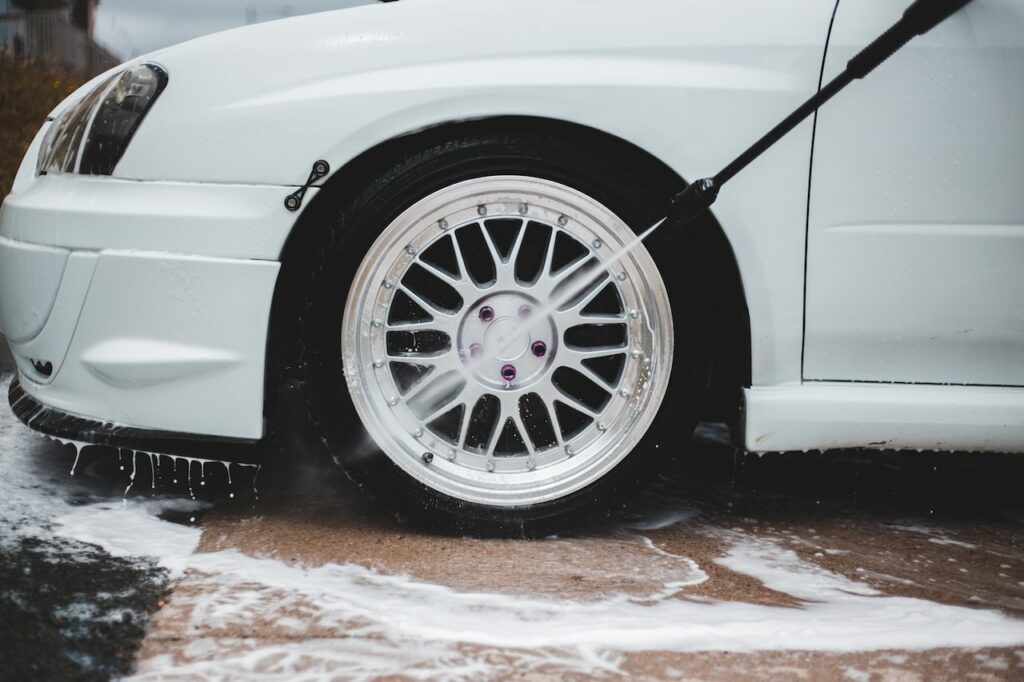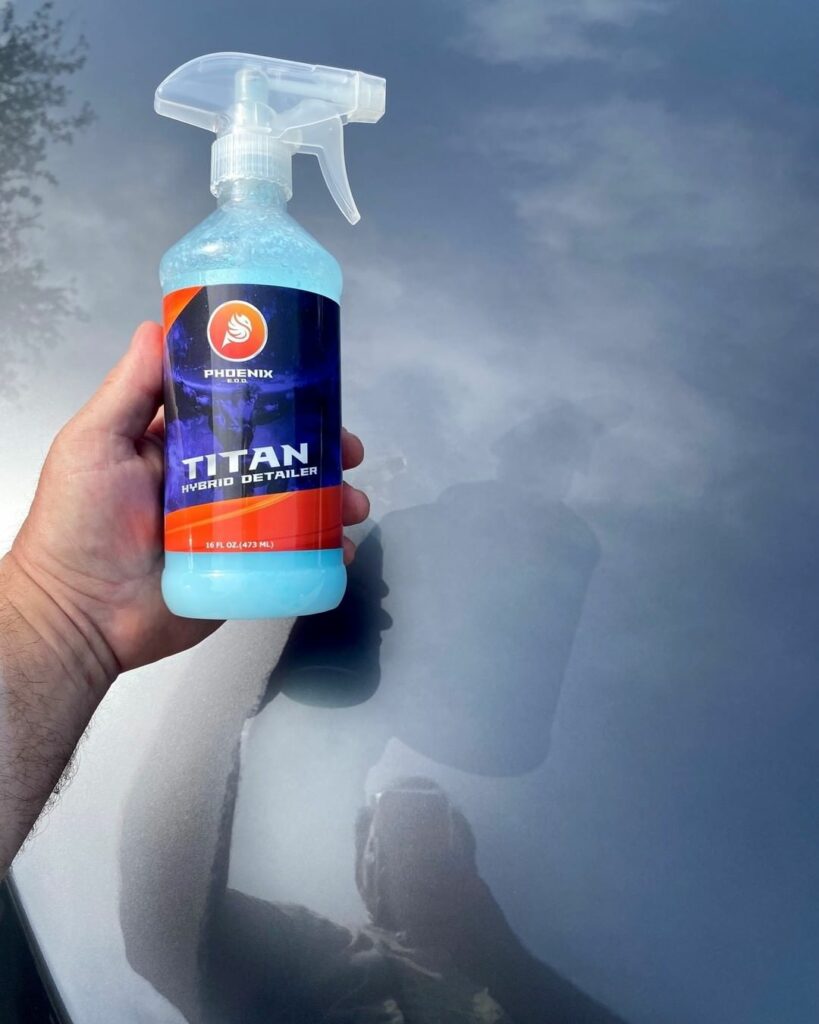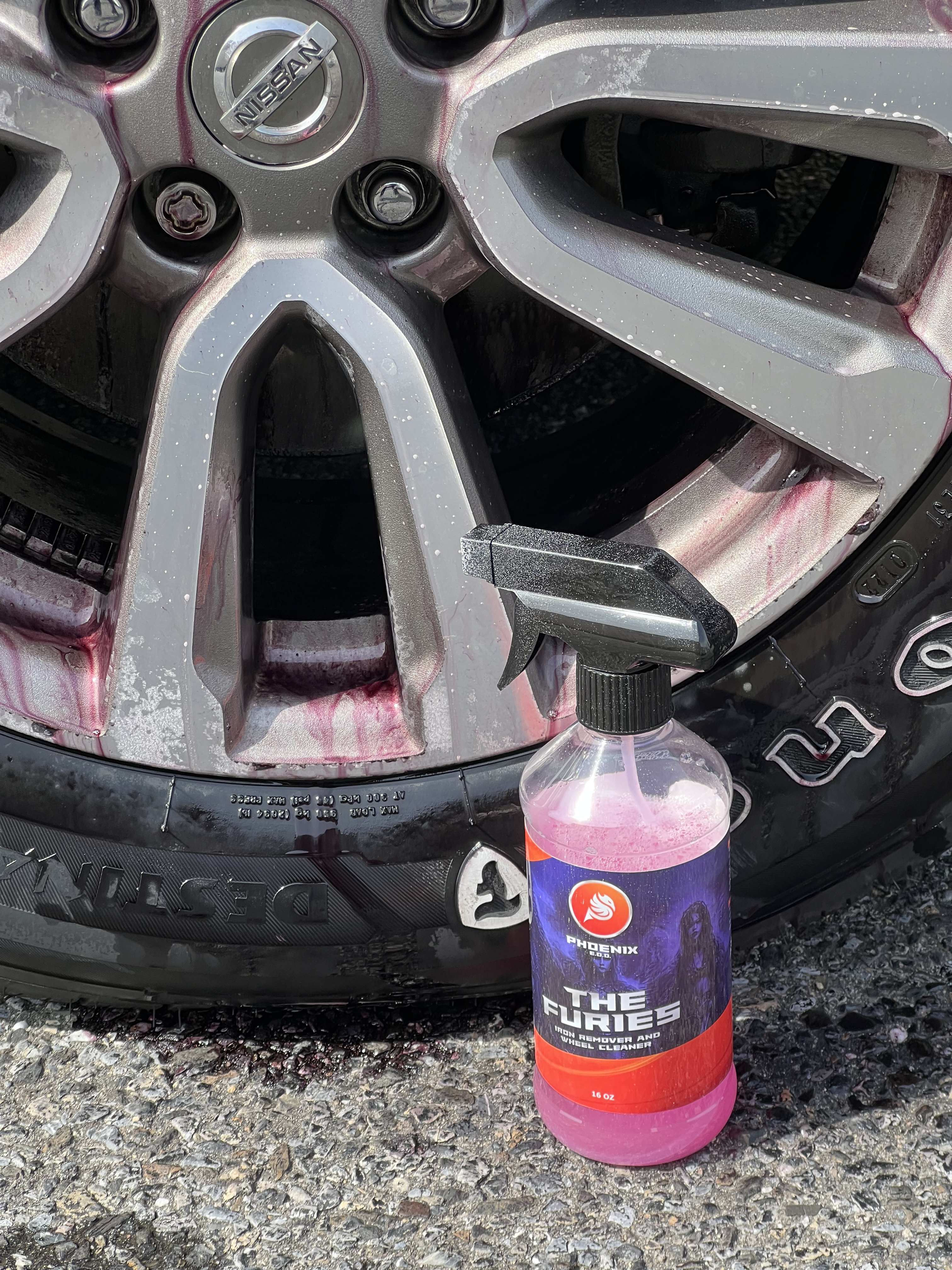As car enthusiasts, we know that keeping our vehicles in pristine condition is a top priority. One of the most common issues we face is the buildup of brake dust and fallout on our cars’ surfaces. In this article, we’ll dive deep into understanding brake dust and fallout, the importance of using an iron remover, how to choose the right product, and how to apply it properly. We’ll also discuss how to maintain your car’s shine after an iron remover treatment. So let’s get started!
Understanding Brake Dust and Fallout
What is brake dust?
Brake dust is the residue created when the brake pads, rotors, and other components of the braking system wear down over time. As we drive, these particles accumulate on our wheels, causing unsightly dark streaks and grime. Brake dust not only affects the appearance of our vehicles but can also cause damage to the wheels if left untreated.
What is fallout?
Fallout refers to the tiny metal particles that embed themselves into our car’s paint and other surfaces. These particles can come from various sources, including industrial pollution, rail dust, and even the metal shavings from our own brake systems. Like brake dust, fallout can damage your car’s paint and clear coat if not removed.
How do they affect your car’s appearance and performance?
Both brake dust and fallout can significantly impact your car’s appearance, causing dull and dirty surfaces that detract from its overall appeal. Additionally, these contaminants can damage your vehicle’s surfaces, leading to pitting, etching, and even rust over time.
The Importance of Iron Remover
The role of iron remover in car care and why not using acids to remove iron
Traditionally, some car owners have used acids like hydrofluoric or sulfuric acid to remove iron particles. However, these acids can be extremely harmful to your car’s surfaces, especially if used improperly. This is where iron removers come in. They are specifically formulated to safely dissolve iron particles without damaging your vehicle’s paint, wheels, or other surfaces.
How iron removers work
Iron removers contain a special chemical compound that reacts with the iron particles, dissolving them and allowing them to be easily rinsed away. This process is often referred to as “decontamination,” as it effectively removes embedded contaminants from your car’s surfaces.
Benefits of using an iron remover
Some benefits of using an iron remover include:
- Safe and effective removal of iron particles
- Prevention of damage to your car’s surfaces
- Restoration of your vehicle’s shine and luster
- Improved appearance and protection
Choosing the Right Iron Remover for Your Vehicle
Types of iron removers
There are various types of iron removers available on the market, including:
- Spray-on: These iron removers come in a spray bottle and are applied directly to the affected areas.
- Gel: Gel iron removers are thicker in consistency, allowing them to cling to the surface for better results.
- Concentrate: These products require dilution with water before use and are typically more cost-effective.
Factors to consider when choosing an iron remover
When selecting an iron remover for your vehicle, consider the following factors:
- Compatibility: Ensure the product is safe for your car’s surfaces, including paint, clear coat, wheels, and trim.
- Ease of use: Some products may be easier to apply than others, so consider your skill level and comfort with the application process.
- Price: While cost should not be the only factor, finding a product that fits within your budget is essential.
The Proper Application of Iron Remover
Preparing your car for iron remover application
Before applying an iron remover, follow these steps to prepare your vehicle:
- Wash your car thoroughly with a high-quality car soap to remove loose dirt and grime.
- Dry your car completely, as a wet surface can dilute the iron remover and reduce its effectiveness.
- Work in a shaded area, as direct sunlight can cause the iron remover to dry too quickly, making it difficult to remove.
Step-by-step guide to applying iron remover
- Put on gloves to protect your skin from the iron remover chemicals.
- Shake the iron remover bottle well to ensure the product is mixed properly.
- Spray or apply the iron remover to the affected areas, ensuring full coverage.
- Allow the product to dwell for the recommended time (usually 3-5 minutes) or until it changes color, indicating the iron particles have been dissolved.
- Agitate the surface gently with a soft-bristle brush or microfiber towel if necessary.
- Rinse the surface thoroughly with water, ensuring all iron remover residue is washed away.
- Dry your car using a microfiber drying towel or air blower.
Tips for effective and safe use
- Always read and follow the manufacturer’s instructions for the specific iron remover product you are using.
- Do not let the iron remover dry on your car’s surface, as this can make it difficult to remove and may cause damage.
- Test the iron remover on an inconspicuous area of your car to ensure compatibility before applying it to the entire vehicle.
Maintaining Your Car’s Shine After Iron Remover Treatment

Regular car care routine
To keep your car looking its best after using an iron remover, maintain a regular car care routine that includes:
- Washing your car with a high-quality car soap.
- Using a clay bar to remove surface contaminants.
- Polishing your car to remove light scratches and enhance the paint’s shine.
- Applying a sealant or wax to protect your car’s surfaces.
Preventive measures to minimize brake dust and fallout
Here are some ways to minimize the buildup of brake dust and fallout on your vehicle:
- Keep your car clean by washing it regularly.
- Use brake dust shields to reduce brake dust accumulation on your wheels.
- Opt for low-dust brake pads, which produce fewer particles during braking.
- Park your car in a garage or covered area whenever possible to limit exposure to pollution and industrial fallout.
Long-lasting protection with sealants and waxes

Applying a paint sealant or wax after using an iron remover can provide long-lasting protection for your car’s surfaces. These products create a barrier that helps prevent contaminants like brake dust and fallout from embedding themselves into the paint and clear coat. Regularly applying a sealant or wax will also make it easier to maintain your car’s shine and luster.
Conclusion
Iron removers are a game-changer for car enthusiasts looking to maintain their vehicle’s appearance and protect it from damage caused by brake dust and fallout. By understanding these contaminants and using the right products, you can safely and effectively remove them from your car’s surfaces. Maintain a regular car care routine, and consider using preventive measures and protective sealants or waxes to keep your vehicle looking its best.
Ready to tackle brake dust and fallout on your vehicle? Explore Phoenix E.O.D.’s “The Furies” Iron removers and other car care products, designed to help you maintain your car’s shine and protect it from contaminants.
Frequently Asked Questions
How often should I use an iron remover on my car?
The frequency of using an iron remover depends on your driving conditions, the level of contamination, and the type of wheels and finishes on your car. Generally, it is recommended to use an iron remover every 3 to 6 months or as needed based on the level of contamination.
Can I use an iron remover on all types of wheels and finishes?
Most iron removers are safe for use on various wheel types and finishes, including painted, clear-coated, chrome, and alloy wheels. However, always check the manufacturer’s instructions for compatibility before using a product on your wheels.
Is iron remover safe for paint and other surfaces?
Yes, iron removers are formulated to be safe for paint, clear coat, glass, and other surfaces when used according to the manufacturer’s instructions. Always test the product on an inconspicuous area to ensure compatibility before applying it to the entire vehicle.
Can I use iron remover on other parts of my car besides the wheels?
Yes, iron removers can be used on various parts of your car, including paint, glass, and trim. They are effective at removing iron particles and other embedded contaminants from these surfaces.

